Photo Credit: I.B. Lee, MiLB.com
This is the sixth in a series of posts rolling out There R Giants Top 50 prospects for 2021. To read the previous installments:
I have a brother whose emails we affectionately refer to as his “War and Peace” offerings, as preparing to read one requires clearing a solid half hour off the calendar. But clearly, I have no room to cast aspersions on this score, as I’ve no doubt been trying your own patience and stamina with the last few posts. So today, as we reach the Top 10 I’m cutting the post in half. That not only lessens the demands on your time, but it enables me to ratchet up the drama as we near the top of the charts! [Editor’s Note: There’s absolutely no drama about the top of these charts]
Just as a reminder, in this post I’ll be using the 20-80 scouting scale to refer to player’s Future Value (FV), utilizing the great work done by Kiley McDaniel and Eric Longenhagen at Fangraphs. I’ve also added risk factors and lowered FV expectations for players far away. Here’s a handy guide with familiar examples to keep a picture in your mind on what the FV grades mean:
80: Franchise Player, #1 starter (Mike Trout, Clayton Kershaw)
70: Perennial All Star, #2 starter (Nolan Arenado, Stephen Strasburg)
60: Occasional All-Star, #3 starter, Elite Reliever (Jose Abreu, Mariano Rivera)
55: First Div. Regular, #3/4 starter, Closer (Brandon Crawford, J. Samardzija, Z. Britton)
50: Average Regular, #4 Starter, Set Up RP (Cesar Hernandez, Tanner Roark, A. Ottovino)
45: 2nd Division Reg or Platoon player, #5 starter, low leverage reliever
40: MLB Bench Player/Reserve
35: Up and Down/Depth Player
30: Triple-A Player
20: Organizational playerx
#10. Kyle Harrison, LHP
DOB: 8/12/01
2019 Highest Level: N/A
Potential 2021 Level: Low A
Acquired: Draft, 3rd Rd (2020)
Future-Value Grade: 50+ (Risk: Extreme)
Here’s a list of the top bonuses the Giants have handed out to amateur players since Farhan Zaidi took over Baseball Operations:
Hunter Bishop, $4,097,500
Patrick Bailey, $3,797,500
Kyle Harrison $2,497,500
Nick Swiney, $1,197,500
Casey Schmitt, $1,147,500
Aeverson Arteaga, $1,000,000
That’s the seven-figure club and there’s a pretty strong divide after the top three. Now that’s an imperfect lens, everything here isn’t oranges to oranges. The international market and domestic draft aren’t a direct comparison to each other and draft bonuses are drastically shaped by the position of the top pick. In addition, there’s certainly a difference between how teams could spend pool money in this year’s shortened five-round draft from normal years.
Still those numbers present a compelling picture of the Giants’ internal evaluations of players at the point of acquisition. It’s not a crazy interpretation of the Giants’ 2020 draft to suggest that the entire five rounds were built around a strategy of carving out enough money to keep Kyle Harrison away from UCLA. By, at least, this measure, he’s by far the most valued amateur pitcher the Giants have obtained in the Zaidi Era. The Desired One.
So let’s start with that point. The Giants have made it clear they saw something very special in this player.
Of course, the possibility exists that the Giants were wrong. Other boards didn’t have Harrison pegged as one of the top high school arms in the draft. Baseball America had Harrison ranked as their #31 high school player, the 14th highest pitcher ranked in the high school class and even the 4th highest HS LHP on the list. Harrison ended up with the highest bonus for a LHP in the high school class and 4th highest bonus for a pitcher of any kind in the class. The question then is why the Giants seem to have been out of step with the industry on their view of the available arms. Why Harrison, as opposed to, say, popping Mick Abel with their top pick?
Not to speak for the Giants, but my interest in Harrison was piqued by a couple of pre-draft interviews I heard back in June. Zach Day, former Pirates pitcher and now executive at Trackman, spoke to Prep Baseball Report’s Nathan Rode about Harrison, saying that while Harrison’s high school and Team USA Trackman data had him just outside of their Top 20 for the draft:
from a physical standpoint…he’s one of those that I think with velo and spin his movement profile will just start ticking up and we’ll start seeing him miss even more bats with his fastball. And his breaking ball is solid….I wouldn’t be surprised…if he chooses to go to school, you see him [drafted] really high [in the first round] coming out next time.
More interestingly, a the creators of Draftpoint, a sentient, natural language processing tool that uses artificial intelligence to draw comparisons in scouting report databases, told Baseball America that descriptions of Harrison’s deceptive 3/4 arm angle and sweeping breaking ball matched major leaguers like Ryan Yarborough and other success stories.
In both cases, there was a strong sense that if Harrison made it to UCLA, he could develop into one of the very highest picks of the 2023 MLB draft. The Giants, in other words, might have been making a play to steal a future top 10 type of player in a year where they don’t intend to have a top 10 pick.
Fast forward four months and we’ve seen some evidence that that future could arrive even sooner than expected. Giants twitter reported that Harrison hit 97 in short stints in Instructional League — well up from the 92-93 he was pitching at for Team USA last summer — you may remember back at #50 when we watched Harrison dominating poor Adrian Sugastey in the 18U International Tournament in Japan:
Harrison’s high school coach David Jeans told me he expected Harrison could add a few mph once he got into a professional training regime, but this was a remarkable jump for a single summer (spent outside the organization). As predicted by Zach Day, that push in velo made Harrison’s entire game jump with it. Here was Farm Director Kyle Haines talking to the Chronicle’s Hank Schulman about Harrison’s performance at Instrux:
I don’t want to throw the word ‘dominant’ out there [Editor’s note: uhhhhh….you just did Kyle!] It almost came a little too easy for him and I’m a little nervous about him thinking the minors will be as easy for him. He looks like a boy in the face, but he was a man among boys on the mound.
Personally, I don’t want to throw the word “Madbum” out there — but how much of what I’ve just written is highly reminiscent of a 17-year-old Bum. It’s not just the Giants…I too am becoming quite unfettered in my appreciation for this young man. I didn’t become totally unhinged and place him above the next guy on this list — but let me tell you I thought about it some!
I really believe that once he gets out and starts facing pro competition, Harrison could quickly become not just the system’s best pitching prospect but, in due time, the organization’s #1 overall prospect. And that he might well be the best starting pitcher in the system. So let it be written; so let it be done.
#9. Seth Corry, LHP
DOB: 11/3/98
2019 Highest Level: Low A
Potential 2021 Level: High A
Acquired: Draft, 3rd Rd (2017)
Future-Value Grade: 50+ (Risk: Very High)
And speaking of Madbum comparisons: the reason Corry IS currently the system’s best pitching prospect is because of the complete and utter Bumgarnering he put on the Sally League in 2019. Should we rattle through a few statistics again? Yes, let’s do.
While the full season numbers (1.76 ERA, 172 strikeouts over 122.2 IP) are impressive indeed, the whole juggernaut really summons its power from the extraordinary 2nd half. On July 2nd, Corry took the hill sporting a 2.59 ERA. He had 86 strikeouts, 42 walks, and 40 hits allowed over 59 innings. Solid. From that day on his performance was almost hard to believe. Over 63.2 more innings he:
allowed 7 runs, posting an 0.99 ERA
struck out 86 more batters BUT
walked just 16
In one remarkable stretch he allowed just SEVEN HITS and just 12 baserunners over five consecutive scoreless starts (28.2 innings). He struck out 44 hitters and walked just five in that stretch. Do you think he won Pitcher of the Month? Yes he surely did! If you want to enjoy a little blow-by-blow I wrote about every single pitch Corry threw in one of those starts.
One persistent question that Giants’ fans asked during all this was: when is he going to get promoted? But he never did — the Giants instead chose to let him ride out the triumphant wave in Augusta. And that does speak to the fact that even in the face of all that dominance the Giants’ staff believed Low A was the level at which Corry belonged. There were still development lessons to be learned there before attacking the next challenge. Fangraphs posted a feature on Corry after the season that focused on the tight relationship he formed with Augusta pitching coach Clay Rapada. In it, Rapada noted that there were still more strides they wanted to see from Corry in terms of fastball command and consistency — particularly with the two-seamer (Corry throws both a four- and two-seam).
But these are nits to be picked and normal development stuff. Corry took a quantum leap in his command profile, in his mental process and mound maturity during the course of 2019. He also made huge strides in the effectiveness of his changeup which only makes his bread and butter out pitch — the curve — more deadly. Corry recently told The Athletic’s Melissa Lockard: “The biggest difference for me was 100 percent my mental state.” Rapada worked with Corry on his between-start preparation, how to modulate and ramp up his intensity levels, his ability to focus on the task at hand on days when he wasn’t pitching. These are the factors that helped him dominate as much or more than the arm action and pitch repertoire.
The Giants had Corry on a regular throwing program throughout the summer to stay sharp, but Haines noted they still wanted him to get a few innings in during Instrux to give him the taste of competition. There he showed a tick more velocity than in 2019, topping out at 96 in his final start and showing more of the consistent sharpness they want to see from him. I suspect that Corry will take it up just one level and start 2021 at High A — but his stay there could be very short if he continues to show the growth that we saw in 2019. He should see a lot of AA in 2021 (if external factors cooperate).
#8. Luis Toribio, 3b
DOB: 9/28/00
2019 Highest Level: A-
Potential 2021 Level: Low A
Acquired: International Free Agent (2017)
Future-Value Grade: 50+ (Risk: Very High)
One of the really fun things about the burgeoning Giants’ system is now we can really start to have position debates. Who ya got at Catcher: Bart or Bailey? Left-handed pitcher: Corry or Harrison (with a Swiney splinter group trying to elbow their way in). The outfield contingent can have its very own 1st and 2nd unit debates.
And now at 3b, we have a fascinating tandem as well — comparing the newly drafted Casey Schmitt, whose calling card is plus defense leavened with a decent amount of game power, against Luis Toribio — who don’t mean a thing if he ain’t got that swing.
While the Giants have built much of their elite prospect depth buying at the couture end of the international market, they’ve also gotten some tremendous value out of more modest signings. Toribio, signed for $300,000 in 2017, quickly established himself as one of the most advanced hitters in the organization. While he hit just .270 in his DSL debut, he walked 51 times (19% walk rate). And while big walk totals are not always an indication of great strike zone awareness in the DSL, the scouting consensus on him was that he had a plan at the plate far beyond his tender years.
His advanced feel for the strike zone and ability to cover the different quadrants allow him to make a lot of hard contact. He hit 10 HRs in the DSL and had a robust .209 Isolated SLG, but both dropped precipitously in his domestic debut in 2019 in which he was mostly a line-drive hitter. Still scouts aren’t worried and believe that there should be plenty of power as he matures. The Giants obviously thought highly enough of Toribio to invite him, along with fellow-teen Luciano, to Summer Camp when it opened and keep him at the Alternative Site all summer.
That’s all good news. The less good news is that Toribio verges on a bat only prospect. He has a thick lower half even as a teenager and projects to be a well below-average runner. Though it’s not plus, he has enough arm for 3b, but his footwork and hands still need a lot of work if he’s to stick at the position. Doing so would give him a much cleaner path to the majors, as falling back to 1b will obviously put a lot of stress on the bat to develop to its highest.
But there is good reason to hope that will happen. As I discussed with Wyatt and others, Toribio brings the Giants basically everything they value in a hitter: he knows the strike zone, he knows what he can hit hard, and he hones in on those pitches. The result of all of those elements should be a high on-base, above average power bat that can sit comfortably in the middle of a major league lineup.

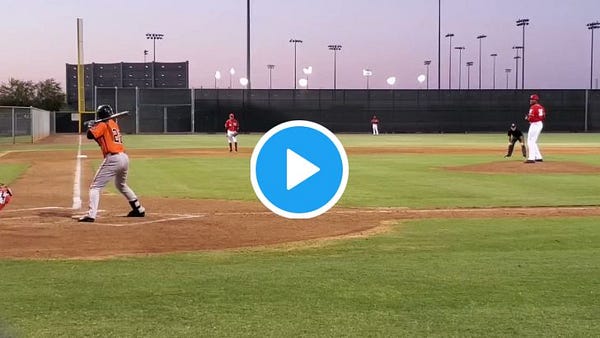
#7. Alexander Canario, OF
DOB: 5/7/00
2019 Highest Level: A-
Potential 2021 Level: IL/Low A
Acquired: International Free Agent (2016)
Future-Value Grade: 55+ (Risk: Extreme)
If Toribio was a bargain at $300,000, Canario was a steal at a five-figure signing number. As anybody who reads my work knows, I’m been a charter member of the Canario bandwagon for years now. Through most of the summer I had Canario in the top 5 of my Giants’ rankings, and though he’s dropped slightly, I don’t want anyone to think that I have weakened in my affections for the lightning-bat slugger. He’s still a dazzling combination of bat-speed, jaw-dropping power, and lithe athleticism.
However, the recent news that he separated his shoulder at Instrux and required labrum surgery did ultimately cause me to nudge him down ever so slightly for this snapshot in time. Still, I don’t think we should over-react to the news. Labrum surgery in his non-throwing shoulder will keep Canario off the field for awhile, but it shouldn’t eliminate his entire 2021. Best guesses I’ve seen — assuming a normal rehab — should put his return to games sometime in June of next year, possibly DH-only at first.
That’s not disastrous, but it does still take more time away from the field for a still-raw talent who needs reps. Unlike Toribio or Hunter Bishop, Canario has plenty of work to do refining his approach at the plate. You may recall when we played “Swing or Take” with Canario earlier in the year, that his tendency to expand the zone often put him in disadvantageous counts and led to bushels of strikeouts (32% in the NWL).
If Canario improves that part of his game, he has as much upside as anybody in the system because when he puts the bat on the ball:
BALL. GO. BOOM!
Canario started his 2019 by homering a ridiculous 7 times in 10 games in a return to the AZL — a return that was necessitated by yet another shoulder injury, incurred diving back into a base on a pickoff throw. Despite that delayed start he ended up 2nd in the NWL in HRs, hitting 9 more at that level. And incredibly, despite striking out in a third of his plate appearances, he also managed a .301 batting average. And, yes, that was the product of an almost comically unsustainable .419 average on balls in play. But it was also the product of a tremendous amount of HARD contact when contact was made. Nearly half of his hits with the Volcanoes went for extra bases (27 of 58).
The 20-year old Canario really is the Raw Toolsy Prospect of the system. He’s fast, he has a tremendous arm, his bat speed is off the chart (as John Manuel used to say — we gotta get some better charts!). I’ve been in love with that swing since the first time I heard it. Watching him take BP conveys the thrill of standing next to the amplifier tower at a stadium concert and feeling the bass throb right through your chest. It’s just ALL so raw. The approach at the plate, the reads in the outfield. He just doesn’t know what to do with all of his gifts quite yet.
Which is what makes the continued delays at getting out on the field and getting on with things so frustrating. Nobody in the organization needs repetitions quite the way Canario does. Hopefully there won’t be any more frustrating side-tracks in getting them. Until then, enjoy the majesty of this mighty swing and remain patient:
#6. Patrick Bailey, C
DOB: 5/29/99
2019 Highest Level: N/A
Potential 2021 Level: High A
Acquired: Drafted, 1st Rd (2020)
Future-Value Grade: 55 (Risk: Medium)
The final change I made in my list was sliding Bailey over Canario and it did come as a response to the news of Canario’s surgery. While I have Canario’s FV grade higher than Bailey’s the risk level gives Bailey the nod for me. How’s that feel, Patrick?
Great! Always glad to provide a little happiness!
It’s hard to get a clear picture on which of the Giants two top catching prospects is the superior defender. Bailey was thought to be something of a glove-first prospect entering college — and it often seems to happen with glove-first types that their defensive reputation is burnished somewhat to compensate for the supposed weakness of the other side of their game. Both Bailey and Bart have plus arms; both have strong receiving reputations and are considered leaders and excellent handlers of pitchers. And both were among the rare college catchers who called their own games which gives them up a boost up that steep learning curve.
Let’s call it a tie then! What was much less clear about Bailey when he entered NC State was where his offensive skills would land. But he certainly made a statement when he led all ACC freshmen in average (.321), total bases (113) and slugging (.604) and set a school Freshmen record for HRs (13). The switch-hitting Bailey brings above average power from both sides of the plate, though he shows better overall hitting skills from the left side. There’s plenty of swing and miss in his game from both sides (he led Collegiate Team USA in strikeouts) and most scouts seem to think that he’s destined to be a power over hit type at the highest levels. Again, all of that sounds fairly similar to Bart, though the power isn’t quite at the same level.
But Bailey also brings a history of high walk totals (12.8% in his NC State career) that should, in conjunction with the power numbers, allow him to be an above average offensive player — especially as a catcher. The whole package sounds like a Three True Outcomes type whose offensive profile will revolve around generous portions of Ks, BBs, and HRs. But that should easily clear the bar for a league average or better catcher. And his ability to hit from both sides of the plate give him (and a potential Giants’ lineup) added flexibility.
Add it all up and it’s not hard to see why the Giants were enamored of Bailey with their 1st round pick. There’s a fairly high floor here and less risk than most other profiles they could have selected. And the fact that his growth and development all played out virtually in Giants Scouting Director Michael Holmes’ back yard didn’t hurt any:


We’ll have to wait to see how exactly the future is going to shake out with the two high-profile catchers sharing a system. But for now, in an industry that is always starving for talent behind the plate, the Giants offer the best 1-2 prospect punch in the game. And, as we’ve seen, some exciting depth behind them.
On Friday we finally reach the summit. And I’m guessing you have a good idea of who’s waiting for us there.
As always, go ahead and tell me what I got wrong! Maybe nothing in today’s post was quite so controversial as Monday’s Gregory Santos ranking but we’ll see:

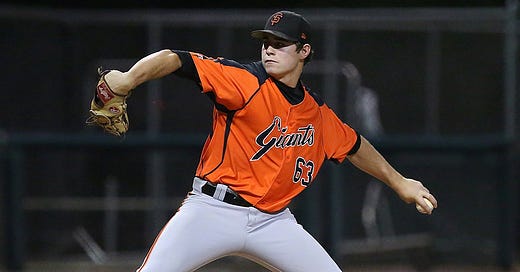




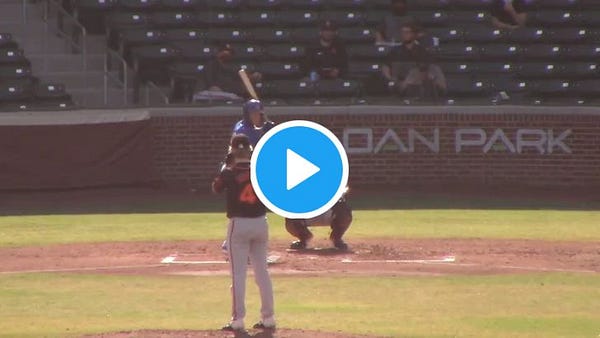
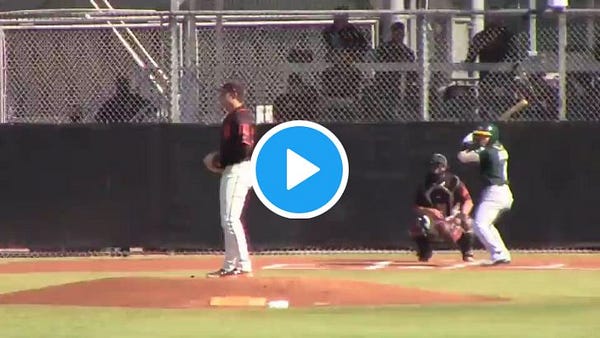
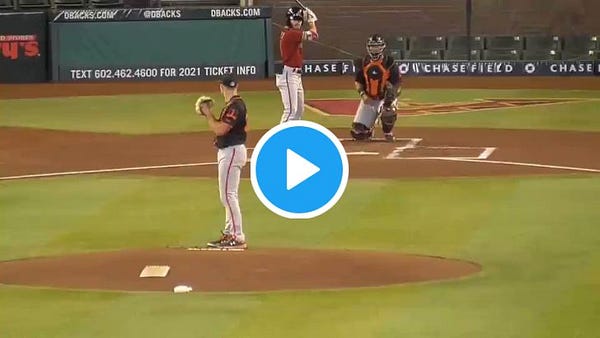
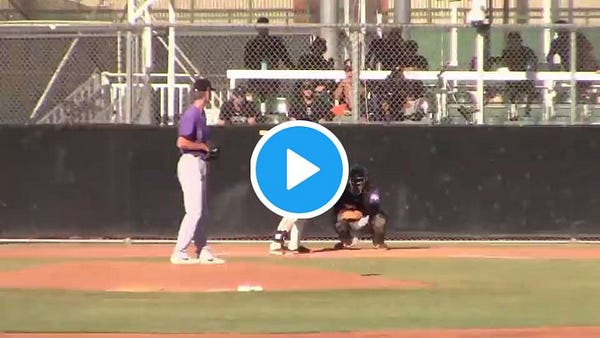

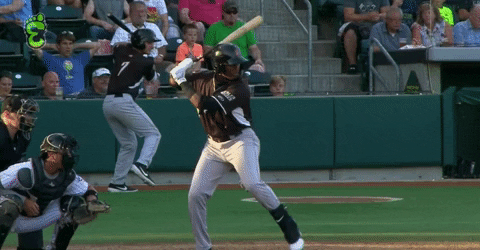

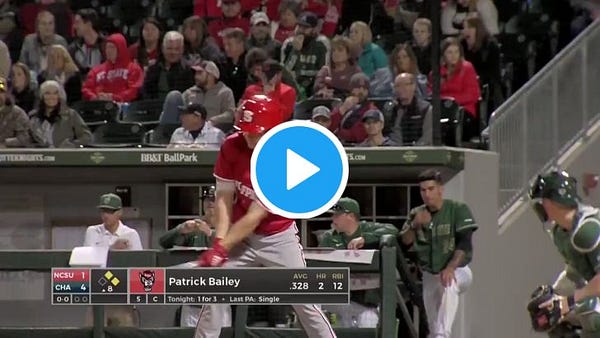
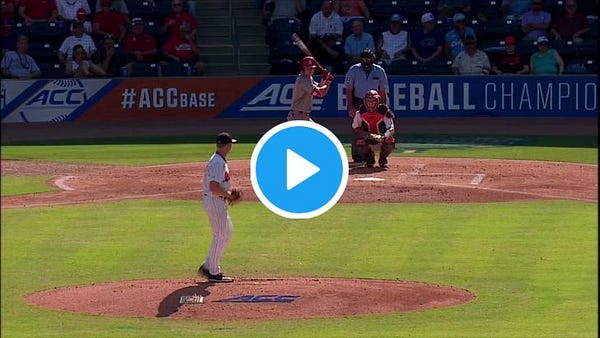
Oh my, Canario’s swing is possibly the sweetest right-handed I’ve ever seen ... this is an exciting group. Now, get ‘em on the field!
you just made me feel a lot better about the 2020 draft.
if the strategy really was built around kyle harrison, then they weren't playing super-safe after all. and that makes me smile. because bailey seemed like *such* a risk-averse move from an organization that has no reason to be overly cautious, and lots of reasons to be aggressive and take some chances.